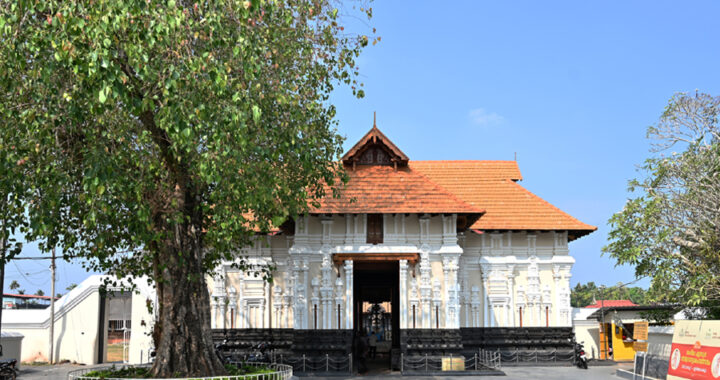Why Would A Company Find A Flexible Budget Variance More Informative?
Content
Steve recomputes variable costs with the assumption that the company makes 125,000 units. Steve made the elementary mistake of treating variable costs as fixed.
In any event, by turning in a flexible budget performance report, you give management the tools they need to make the best possible decisions. Anything that causes the actual variable overhead head rate to differ from the budgeted variable overhead head.
Understanding Budget Variances
Political and regulatory changes that were not accurately forecast are also included in this category. A budget variance is a periodic measure used by governments, corporations, or individuals to quantify the difference between budgeted and actual figures for a particular accounting category. A favorable budget variance refers to positive variances or gains; an unfavorable budget variance describes negative variance, indicating losses or shortfalls. Budget variances occur because forecasters are unable to predict future costs and revenue with complete accuracy.
If the variance is unfavorable, increase the amount in your flexible budget to account for future cost increases. If it’s favorable, you might lower your budget or keep it the same to reflect the lower costs.
Performing Budget To Actual Variance Analysis
It requires careful analysis of costs and incorrect classification of costs can provide inaccurate results. In the next chapter will show how analysis uses standards to subdivide these variances into price and efficiency components. Even so, it’s important to keep in mind that not all line items in a budget can be flexible. For example, your company has many expenses that are likely fixed for the entire year, such as rent or contractual obligations.
- Flexible budgets take into account any activity level; therefore the activity level can be different for any business.
- Another way to design the budget is to have columns showing variable costs for different benchmarks, such as the amount of income you reach.
- The next step is to combine the variable and fixed costs in order to prepare a new overhead budget report, inserting the new flexible budget results into the overhead budget report.
- What is not known from looking at it is why the variances occurred.
- How and why a company should use a static budget, static budget variances, and flexible budgets.
- If you estimate the cost to create 500 items at $1,000, the cost per unit is $2.
On the other hand, some overhead costs, such as rent, are fixed; no matter how many units you make, these costs stay the same. To determine whether a cost is variable or fixed, think about the nature of the cost.
Favorable Vs Unfavorable Variance
If you have a positive variance, the company produced favorable results and achieved more than it had originally planned. And adverse or negative variance means the organization was not able to achieve its target plans. Because the budget can be made for any activity, the variance also needs to be analyzed separately for each activity. Variance analysis can help management understand the cost drivers and causes of the change whether the change is positive or negative. A flexible budget model, which is used to create a flexible budget, consists of formulas that generate expected costs based on assumptions used to create the master budget. Any difference between the flexible budget and actual costs and revenue is referred to as a flexible budget variance. Then the revenue and cost parts of the sales mix variances would be the differences between columns 4 and 7.
- Steve made the elementary mistake of treating variable costs as fixed.
- The flexible budget variance is the difference between the flexible budget and the actual results.
- Because static budgets depend on a particular level of activity, they are not sufficiently informative when it comes to preparing performance report.
- Summary Exhibit – The profit analysis equations illustrated in Part I. A are summarized in Exhibit 13-5 for easy reference.
- Most businesses use budgets with fixed estimates for revenues and expenses, by category or sub-category.
- You can create dynamic and flexible dates in excel by using the below formula, and referencing the date ranges you put into the “Menu” worksheet of your workbook.
VLOOKUP requires your reference cell to be the first cell in a series of columns. For example, if you want to return “Sales” from your data set, then “Sales” needs to be in the first column you reference in your VLOOKUP formula. The VLOOKUP function is a basic function used by finance professionals. It stands for vertical lookup and it searches for a specified value in a column and returns a corresponding value from a different column in the same row. If you do not have a similar format using raw data, then model this tab after your “Forecast” tab and create a new tab called “Data”. Copy and paste the raw data into your “Data” tab and use reference formulas to pull the values into your “Actual” tab.
What Is A Flexible Budget For Small Business?
Budgets are a financial tool that forecasts business revenue and expenses over a specific period of time. You can use a budget to plan for various activities or departments within a business. Budgets offer planning and control measures for an organization, and will always vary slightly from actual sales and actual output.
There can be a change in the input prices and raw materials for a company due to a sudden surge in demand or a supply bottleneck. Moreover, due to the change in labor laws and minimum wage regulations, the cost of labor also increases. This is a variable overhead cost that how to find flexible budget variance doesn’t directly relate to the production of a product. A static budget is a figure you set at the beginning of a project or fiscal period that estimates how much you might spend. Even if there are significant changes in revenue or expenses, this number remains the same.
Datarails replaces spreadsheets with real-time data and integrates fragmented workbooks and data sources into one centralized location. This allows users to work in the comfort of Microsoft Excel with the support of a much more sophisticated data management system at their disposal. In a final worksheet, labeled “variance” copy and paste the same layout and format you have for your “actual” and “forecast” tabs. This formula will automatically reference today’s date and compare it to the date in the date column heading. If the column heading date is further in the future than today’s date, then it will reference the corresponding cell in the “Forecast” tab.
Comparison Of An Income Statement To A Budget
Variance analysis using flexible budget enables the managers to separate the effects of sales volume from other explanations https://intuit-payroll.org/ of why the static budget was not achieved. We have identified flexible budget variance and activity level variance.
- Given that the variance is unfavorable, management knows the trucks were sold at a price below the $15 budgeted selling price.
- Variable costs can include marketing and sales, and may also include the cost of materials, number of sales, and shipping costs.
- Learn financial statement modeling, DCF, M&A, LBO, Comps and Excel shortcuts.
- Note that the shipping department’s total static budget variance is $8,000 unfavorable since the actual expenses of $508,000 were more than the static budget of $500,000.
- Business owners are inclined to focus on expenses because you can control them.
- Under a static budget, the original level of production stays the same, and the resulting variance is not as revealing.
The biggest advantage of flexible budgeting is the stress on operational efficiency required to achieve the target. Note that the shipping department’s total static budget variance is $8,000 unfavorable since the actual expenses of $508,000 were more than the static budget of $500,000. The department’s total flexible budget variance is $4,000 favorable since the actual expenses of $508,000 were less than the flexible budget of $512,000. The basis of virtually all variance analysis is the difference between actuals and some predetermined measure such as a budget, plan or rolling forecast. Note that when combined, the sales price variance and the unit cost variance must be equal to the price cost or contribution margin per unit variance. Identify the variable costs that are to be incurred and determine the variable cost on a per-unit basis or as a percentage of activity level.
A flexible budgeting approach narrows the gap between actuals and standards due to changes in activity levels. A flexible budget varies to adjust for fluctuations or shifts in the volume of sales-related activity. Instead of static forecasts, a flexible budget — also referred to as a flex budget or variable budget– shows costs as a percentage of sales. Costs go up or down accordingly as the company records actual sales numbers. Most costs exhibit characteristics of both fixed and variable characteristics. Therefore, some firms that use flexible budgeting only forecast costs with a strong variable component as a percentage and hold the other, less variable costs as fixed. However, compared to static budgeting, it doesn’t fix all target costs.
Definition Of Flexible Budget
A budget that accounts for potentially higher costs may cause a more favorable variance. To compute the value of the flexible budget, multiply the variable cost per unit by the actual production volume. Here, the figure indicates that the variable costs of producing 125,000 should total $162,500 (125,000 units x $1.30). For Skate, an analysis indicates that indirect materials, indirect labor, and utilities are variable costs. On the other hand, supervisory salaries, rent, and depreciation are fixed.
Summary Exhibit – The profit analysis equations illustrated in Part I. A are summarized in Exhibit 13-5 for easy reference. Flexible budgeting is the key to providing the frequent feedback that managers need to exercise control and effectively carry out the plans of an organization. It can help the managers deal with uncertainty by allowing them to see the expected outcomes for a range of activity. Determine the cost and revenue behavior pattern for each cost included in the budget. Anything that causes the purchase price of the material to change. Purchase discount for bulk purchase, higher or lower quality material. The difference between the actual quantity of an input and the budgeted quantity of an input.
For example, if it costs $5,000 for the business to create 100 products, production is a variable cost. You can divide $5,000 by 100 to get the price per unit, $50, meaning it costs $50 to produce a single product. Using a price per unit calculation can help you scale your budget for different levels of production. For instance, management may consider adjusting the sales price by 1 to 3% to generate excess revenue.
Keep these in their own section on your budget so it’s easy to identify if there are any unexpected changes. In other words, comparing the $60,000 actual cost of making 125,000 units to the $50,000 budgeted cost of making just 100,000 units makes no sense. If the company performs well and reaches an above-target performance, it will have a favorable variance of $90,625. Additionally, at 50% capacity, working the product costs $180 per unit and it is sold at $200 per unit. At 80% capacity, the working raw materials cost increases by 5% and selling price falls by 5%. At 50% capacity, the cost of working raw materials increases by 2% and the selling price falls by 2%.


 കേന്ദ്ര സര്ക്കാര് നടപടിയില് പ്രതിഷേധിച്ച് കൊണ്ട് സിപിഎം പ്രതിഷേധ പ്രകടനവും പൊതുയോഗവും നടത്തി
കേന്ദ്ര സര്ക്കാര് നടപടിയില് പ്രതിഷേധിച്ച് കൊണ്ട് സിപിഎം പ്രതിഷേധ പ്രകടനവും പൊതുയോഗവും നടത്തി  മാപ്രാണം ഹോളിക്രോസ് ഹൈസ്കൂളില് നിന്നും വിരമിച്ചവര്
മാപ്രാണം ഹോളിക്രോസ് ഹൈസ്കൂളില് നിന്നും വിരമിച്ചവര്  നന്തി കെഎല്ഡിസി കനാല് ബണ്ടിന്റെ ഇരുവശത്തും തള്ളിയ മാലിന്യം തിരിച്ചെടുപ്പിച്ചു
നന്തി കെഎല്ഡിസി കനാല് ബണ്ടിന്റെ ഇരുവശത്തും തള്ളിയ മാലിന്യം തിരിച്ചെടുപ്പിച്ചു  അഞ്ചാമത് ഓള് കേരളാ സ്റ്റാഫ് ക്രിക്കറ്റ് ടൂര്ണമെന്റ് : ക്രൈസ്റ്റ് കോളജ് ടീം വിജയികള്
അഞ്ചാമത് ഓള് കേരളാ സ്റ്റാഫ് ക്രിക്കറ്റ് ടൂര്ണമെന്റ് : ക്രൈസ്റ്റ് കോളജ് ടീം വിജയികള്  ലോണ് ടേക്ക് ഓവര് ചെയത് മറ്റൊരു ലോണ് ശരിയാക്കി കൊടുക്കാമെന്ന് പറഞ്ഞ് പരാതിക്കാരിയുടെ പേരില് കാര് വാങ്ങി തട്ടിപ്പ്; യുവാവ് അറസ്റ്റില്.
ലോണ് ടേക്ക് ഓവര് ചെയത് മറ്റൊരു ലോണ് ശരിയാക്കി കൊടുക്കാമെന്ന് പറഞ്ഞ് പരാതിക്കാരിയുടെ പേരില് കാര് വാങ്ങി തട്ടിപ്പ്; യുവാവ് അറസ്റ്റില്.  ഇരിങ്ങാലക്കുട ബിആര്സിയിലെ ഓട്ടിസം സെന്ററില് ലൈബ്രറി ഉദ്ഘാടനം നടന്നു
ഇരിങ്ങാലക്കുട ബിആര്സിയിലെ ഓട്ടിസം സെന്ററില് ലൈബ്രറി ഉദ്ഘാടനം നടന്നു 




